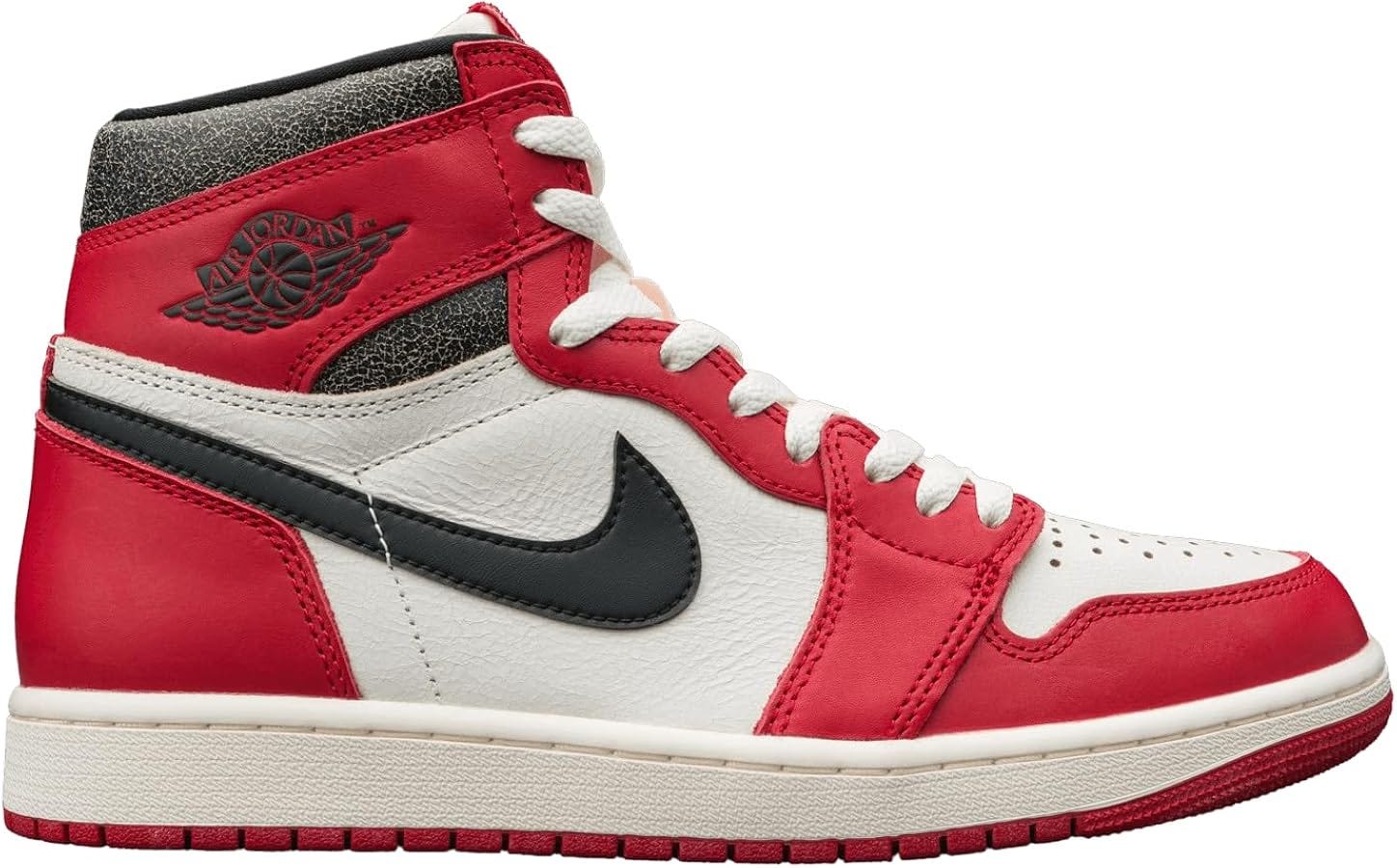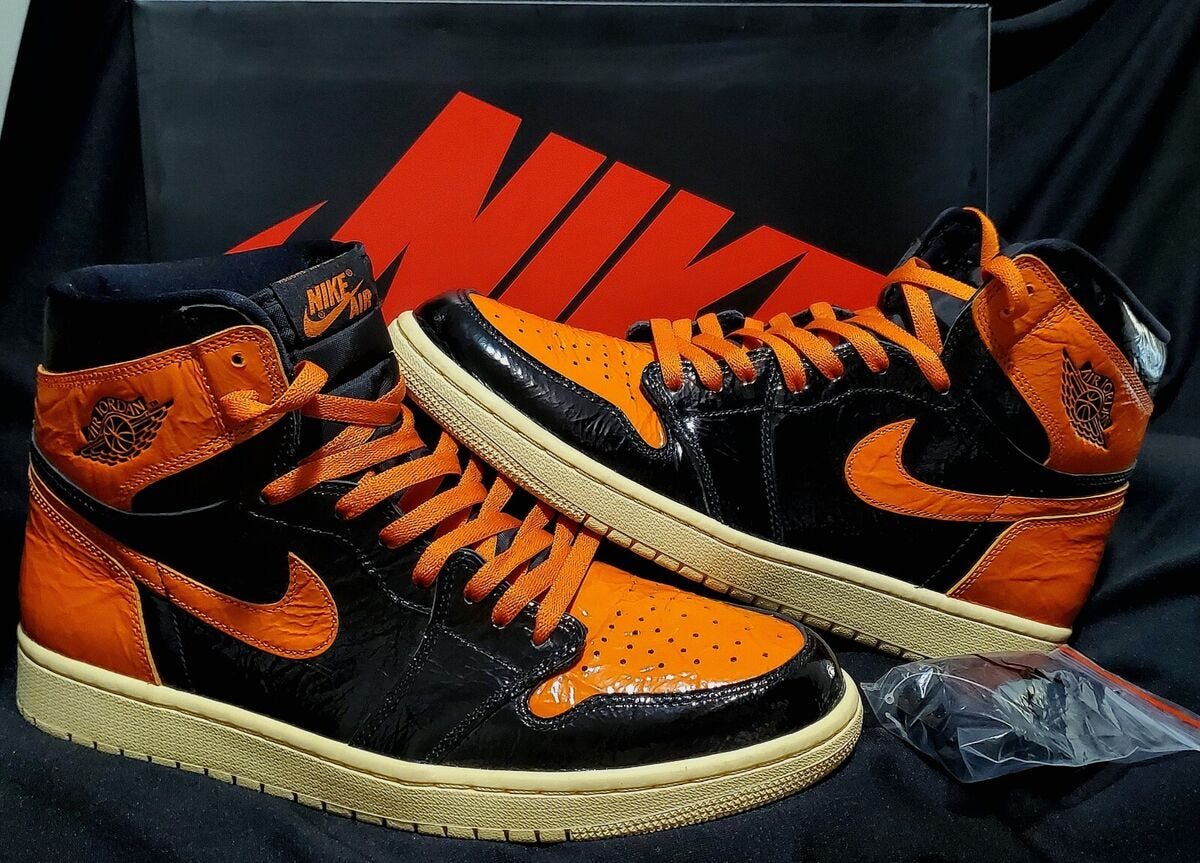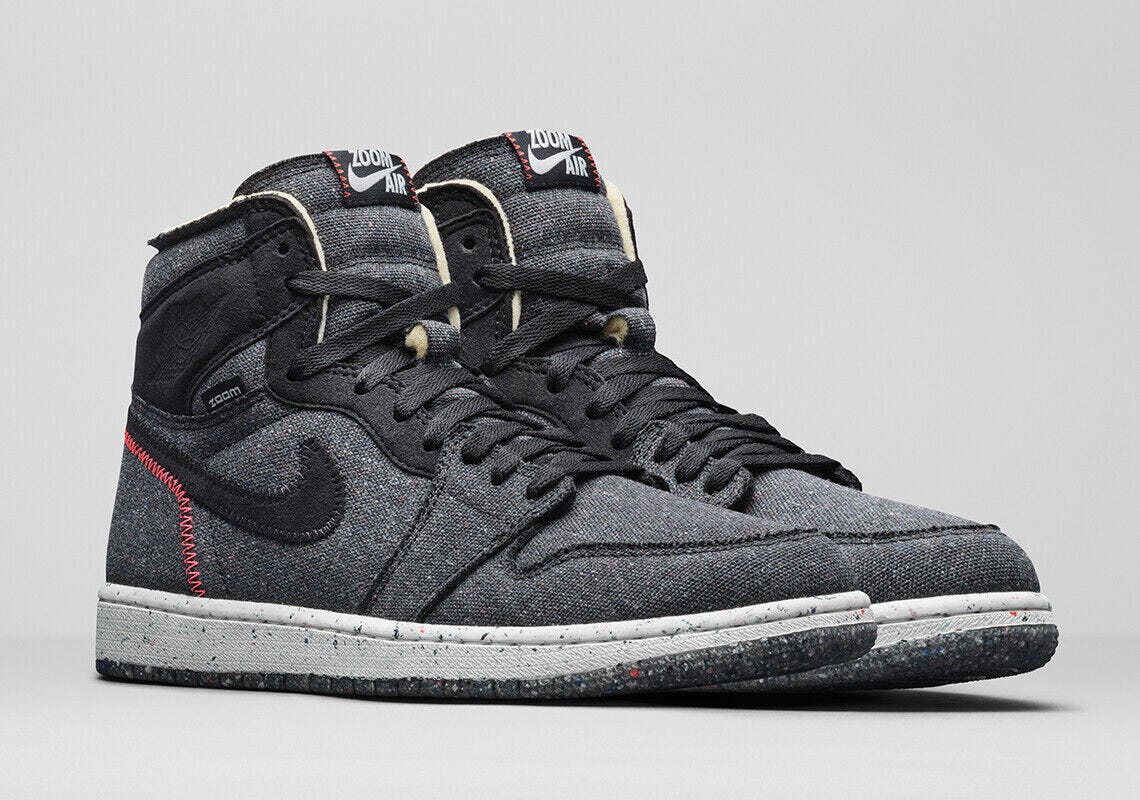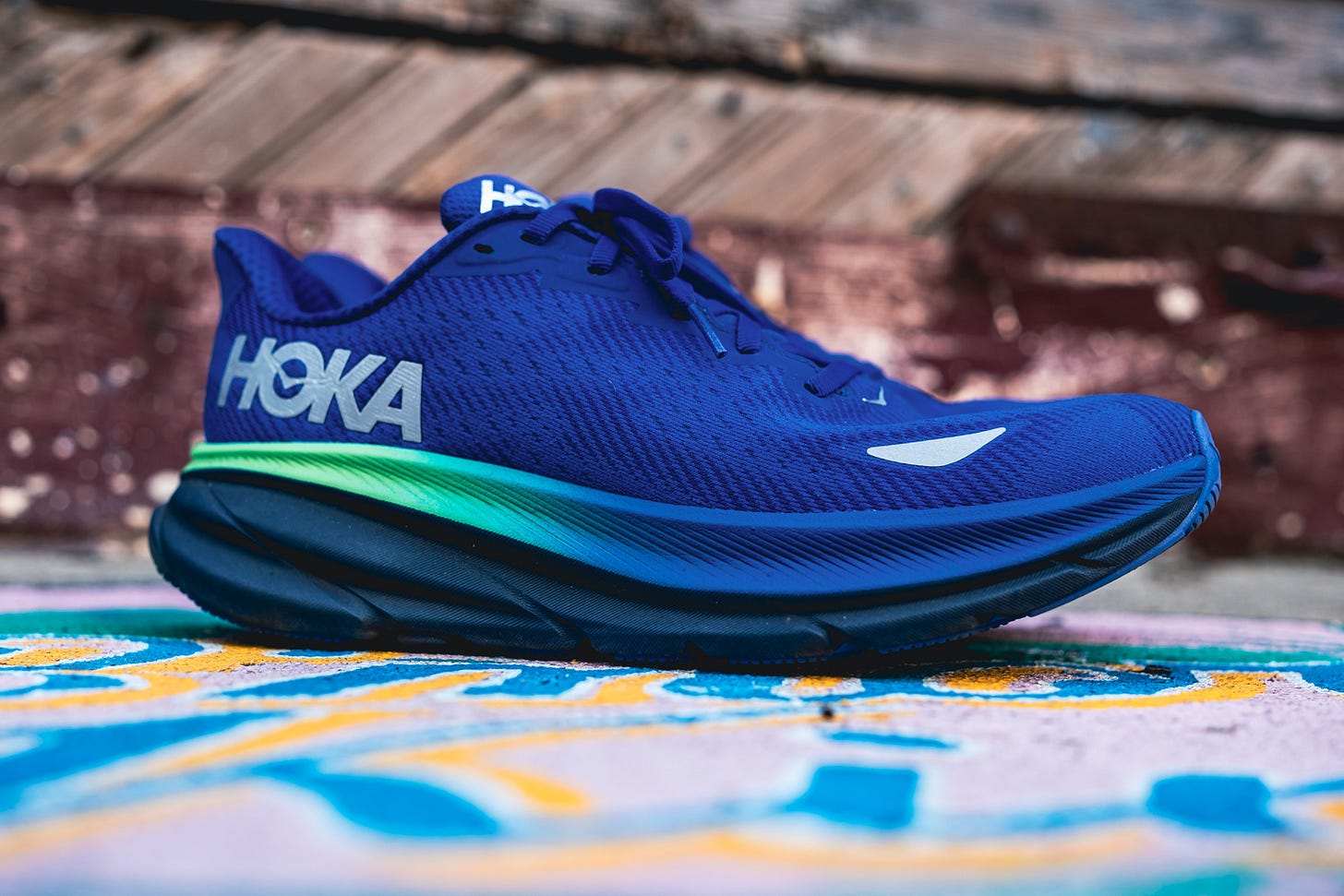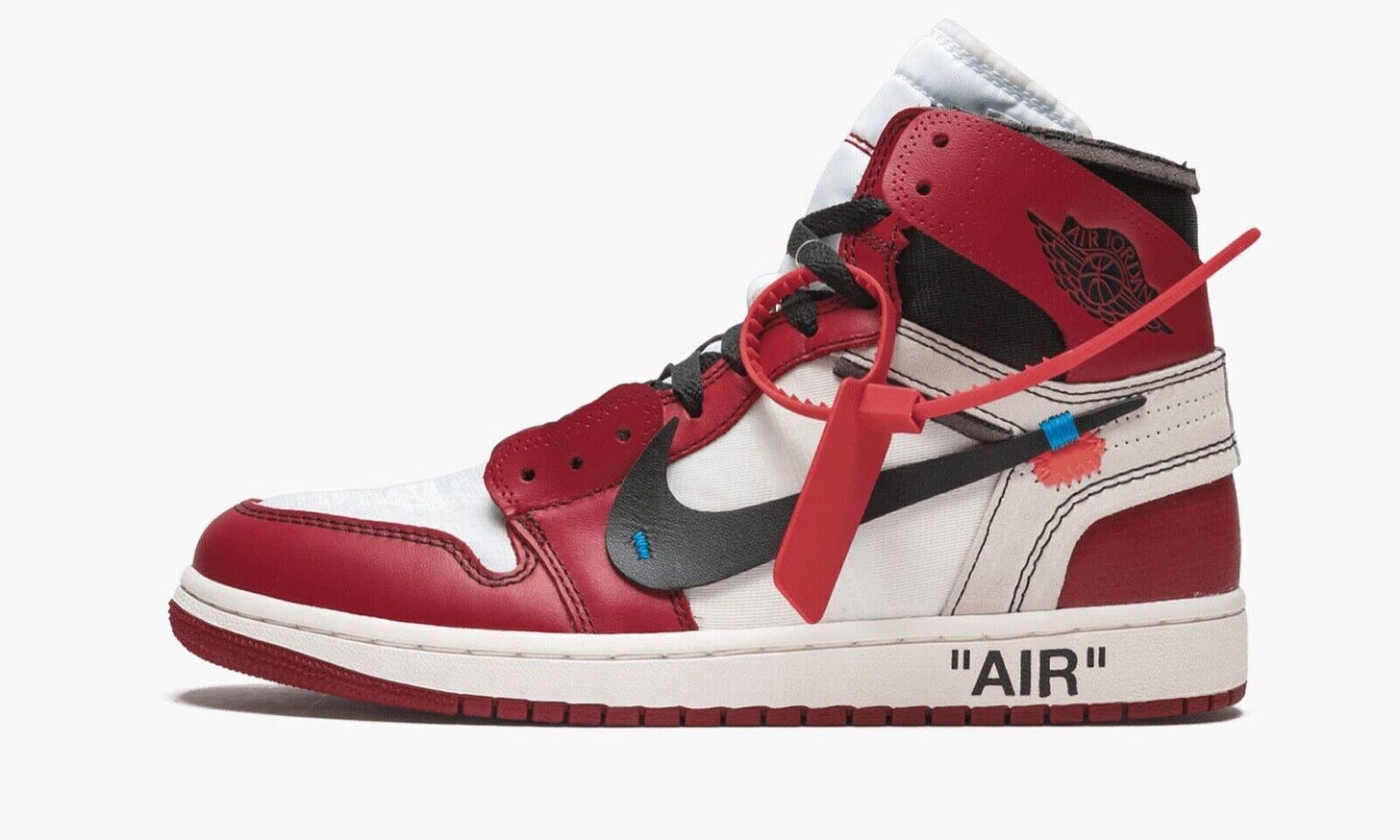What Do Air Jordans Look Like?
Nike’s Direct to Consumer Experiment and the Folly of Alternate Colorways
What does a pair of Air Jordans look like? Close your eyes and picture them, if you please. If you lack imagination or just legitimately don’t know, feel free to make use of the image below.
This is, of course, not the only kind of Air Jordan. There’s thirty-nine distinct models in total and most of them have some sort of cult following. Jordan brand is arguably the most successful sports marketing enterprise in human history. Phil Knight and Michael Jordan injected an element of fashion into the game of basketball and the sport has never been the same. But these are the ones, both literally (the first ones) and figuratively (the archetypal ones). They look like this. In the Platonic sense; this is The Form of The Thing, maybe for all basketball shoes since their release.
But you can also get Air Jordans that look like this:
Or this:
Do you see the issue yet?
How about now? Do these still look like Air Jordans to you? Are they identifiable as such? How far can we travel from the initial concept until we strip it of meaning? How many iterations can we produce until we enter the realm of Pop Art; veneration of consumption?
I’m losing you. That’s understandable. I apologize. Let’s back up.
With Thanks to the Wall Street Journal
The Wall Street Journal does a pretty good news brief podcast that I listen to while working out sometimes. I was raised in a WSJ household and so I retain some affection for their reporting even with their obvious pro-business fiscal conservative bent. I find them pleasantly stodgy and austere in a journalistic environment where thirtysomething Ivy League alumni with six-figure legacy media jobs all want to portray themselves as regular boys and girls who watch Netflix and eat hot chip and their lives are a total messssssss you guyzzzzzzzzz. Though WSJ as an institution is ripe for parody, I will say. If you ever find yourself operating at a class resentment deficit, shell out for one of their weekend editions and navigate to the “Mansion” (I know, right?) section. Lotta Paris Hilton “Stop Being Poor” tank top energy in those pages I tell ya.
Anyway, I value their business reporting. I don’t think we get enough of that in our all-politics-all-the-time Instagram infographic news diet. If you really want to know what levers were pulled to make the culture do what it is currently doing at any given point, you’re better served looking in a Fortune 500 boardroom than in a senate subcommittee hearing. Capitalism is not just consumption, it is production (both material and cultural), and production can happen anywhere. Even Beaverton, Oregon; global headquarters of Nike, Inc.
On a recent episode of The Journal, I learned that the CEO of Nike; John Donahoe, was stepping down after four years at the helm. I had some vague sense of Nike’s malaise since the Pandemic (lord knows they aren’t the only company experiencing that). The Journal’s roundup gave me a good refresher. They’d hired a tech guy (Donahoe was the former CEO of Ebay) to try and emphasize the online retail portion of their business and it hadn’t panned out. They’d alienated wholesale retail partners, produced an excess of shoes no one was that excited about, and lost crucial market share among runners (the OG Nike demographic, Phil Knight was on the track team at the University of Oregon before he founded the company). Putting aside the obvious sympathy due to 1,500 Nike employees losing their jobs so the company can cut costs, it’s grimly hilarious that billion dollar companies keep falling for the allure of “the tech guy.” You’re not a tech company! You make sneakers and workout attire. Why are you pivoting to video? Be serious.
Never Trust a Focus Group
In my opinion, Mr. Donahoe’s mistake, Nike’s mistake, was misunderstanding consumer psychology.
Let’s say you and I work for the marketing department of a company that sells coffee beans wholesale. We run focus groups. We invite a representative sample of the coffee drinking public into a clean, comfortable conference room, serve refreshments, and try to get a sense of what they’d like from us. We go around the room and ask our participants what sort of coffee they tend to enjoy. “Well, I for one favor a rich, dark roast.” Says one, sounding confident. The room seems to agree with them. We take notes, send our findings to corporate headquarters, and before long we’re deprioritizing lighter, more floral beans to focus on darker, earthier roasts. A year passes, yet we don’t see the expected sales bump. In fact, we’re losing market share. How can this be? Simple. That guy lied when he said he liked a dark roast. He said what he thought would paint him in the best light, mark him out as an intelligent consumer with mature, adult tastes. Everybody else in the room understood this implicitly and followed along with him. They didn’t wanna look tasteless either. We can’t blame him for lying to save face, people do it all the time. We only have ourselves to blame for believing him. This is the secret sauce of true product design gods like Steve Jobs. The consumer is not actually capable of telling you what they want; you tell them what they want.
Mr. Donahoe and his team at Nike looked at the strong sales of the company’s most iconic products and thought they’d target the already-ardent consumers of these products by doubling down on their “fashion item” status. More colorways, more cuts, more collaborations with tastemakers and boutique brands. Participant A in focus group B already owns a pair of Air Jordans and told us his favorite color is orange. Surely he’ll buy a pair of Air Jordans in “sunset orange” or whatever we end up calling it. Participant C in focus group D told us he’s a big Travis Scott fan. Well how about collaborating with Travis Scott on some shoes? Participant C will surely be lining up to buy them.
This didn’t pan out. Our hypothetical focus group members didn’t behave as expected. People aren’t subject to rigid if-then logic. And this is before we even factor in the economics of it all. Participant A likely saw the shoes meant to appeal to him and shrugged, he’s already got one pair of Jordans, why spend $180 on the same sneakers in a different color? But this pales in comparison to the plight of participant C. Even if he decides to try and get himself a pair of limited edition Cactus Jack sneakers, he’ll likely face a steep markup from a reseller who purchased a large amount of the available sneakers at launch. This is to say nothing of the far likelier outcome for Participant C, where he looks at the product which results from a given collaboration and thinks; “wow! That’s stupid, ugly, and overpriced!”
Directly Past the Consumer, More Like
The shift to direct-to-consumer over everything else paradoxically made most of these products harder to get. You and I can never compete with the bot farms and professional resellers. This is true for Swifties, Sneakerheads, and any other fan demographic that needs to be at their computer at a specific date and time to purchase the holy objects of their fandom. Moreover, the move away from traditional wholesalers like Foot Locker meant Nike ceded shelf space in these stores to their rivals, most notably emergent brands like HOKA, whose products have cut into Nike’s market share, particularly in the running shoe business. Shoes are not just fashion items. Some people who buy athletic shoes do in fact intend to use them for an athletic purpose.
The people who benefited from the shift in Nike’s strategy were not Nike fans, Nike employees, or Nike itself (in the cosmic, God the Father sort of sense). The beneficiaries of colorway inflation, collaboration mania, and limited edition FOMO were the unmoored, unbothered cash-rich citizens of globalized capital. The new ideal customer became the sort of person who’s willing to hold their nose and ignore the exorbitant markup on the resale market for the privilege of owning something rare and trendy. The designs and aesthetics don’t matter nearly as much to this sort of consumer as the personages involved. Pharrell, Kanye West, Rick Owens, Travis Scott, Virgil Abloh (may he rest in peace). When you don’t make average consumer money you can afford to discard average consumer concerns, and besides, a thriving resale market means you’re unlikely to experience a serious financial loss on your investment (if that even matters to you).
Outside of the obvious money being made on the resale side of the subculture, where Nike never sees a cent of those exorbitant markups (which, they’re buying the shoes, not renting them, womp womp) a paucity of rich, tasteless people with a lust for fancy sneakers seems like a very good problem to have, if you’re Nike. Thing is; those people go away. Their love is always a temporary phenomenon. Designer brand hi-tops give way to Italian loafers give way to tabi boots. When you court a consumer whose main priority is appearing trendy, you’re inevitably going to see most of them break your heart in favor of their latest style reinvention. Nike has almost certainly turned a few disaffected rich kids into more dedicated sneakerheads, but their opinions are likely beginning to migrate closer to the complaints of their now-alienated core audience, who look at every incoming drop and think either “well those are neat but I’ll never be able to get them” or “these are ugly/lame/uninspired” (pick one or more).
The Heat Death of a Brand
I am not a sneakerhead. I dunno what makes shoes “cool.” I get sticker shock easily and so I rarely venture beyond the comfortable confines of Vans and Adidas essentials. But I know what it looks like when a concept is run into the ground. When iteration takes priority over innovation and a fandom grows to hate the object of their affection. That’s what drew me to this subject.
I’ve long held a theory that any long running creative endeavor dies a heat death when it becomes about reproduction rather than innovation. Star Wars in the modern era is perhaps the best example of this principle in action. Disney paid $4 billion to acquire that IP and seemed to have no idea what to do with it once they had it. They presumably paid a lot of consultants and held a lot of focus groups of their own. They gathered around conference tables and thought long and hard about how they’d make their ten figure investment pay. “Well,” they seem to have said “we need to make more Star Wars, obviously.” What does that entail? Well, it’s Star Wars, you know, there’s a desert planet and a Death Star and the Millennium Falcon and light sabers and Chewbacca is there. You know, Star Wars. We’ll iron out the details. It’s only Star Wars, how hard can it be?
Mr. Donahoe found himself in a not dissimilar position when he ascended the throne at Nike. Presumably at some point in his first few weeks he found time for a meeting with the creative director of Jordan brand. Maybe they had lunch. “Well sir,” they said “our brand is very strong, our sales are very strong, what should we do?”
“Well,” he may have replied “make more Jordans, I suppose.”
And so entropy sets in. The special magic once associated with a given brand or cultural product diminishes, people feel their love for a thing curdle. Maybe they move on to something else, maybe they stick around as embittered hecklers, getting new fulfillment out of hating a thing they once loved. Hopefully brands suffering this entropic fate can shake out the cobwebs, find direction and resolve, build bridges with fans, and once again innovate and inspire. In the meantime, I’ll leave you with this, the first thought I had when planning this essay:
The funny thing about it all, at least from where I sit, is that when you make enough varieties of Air Jordans, you eventually wind up making something that just looks like an Air Jordan knockoff.




